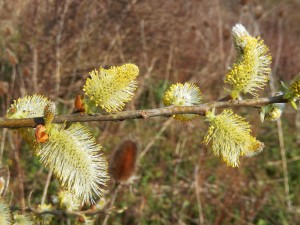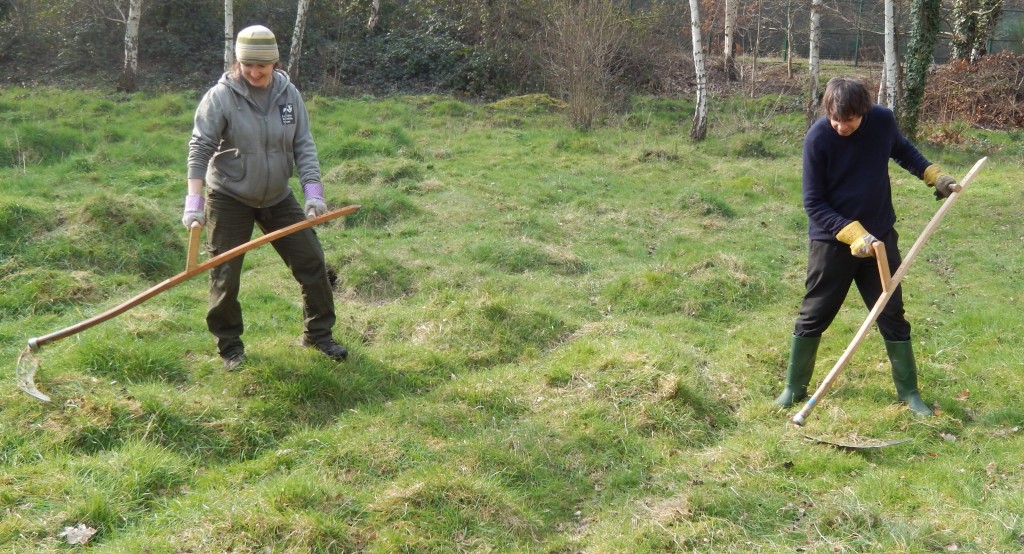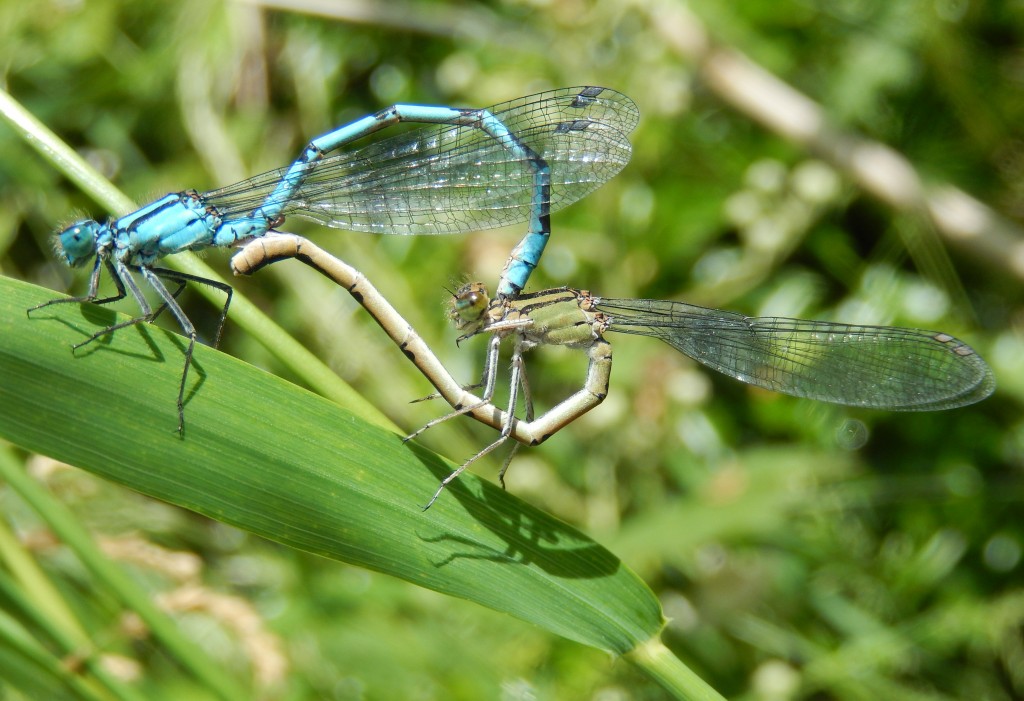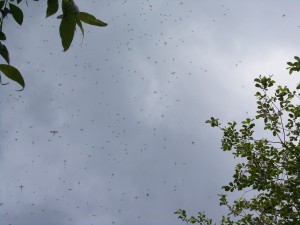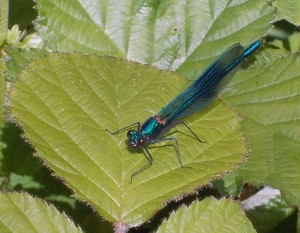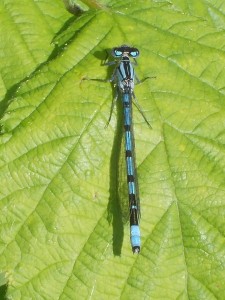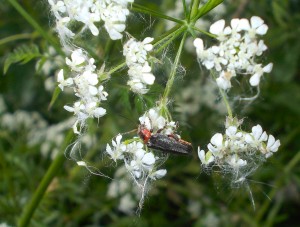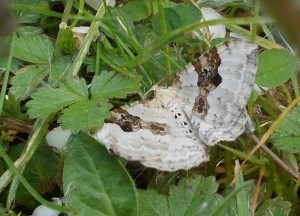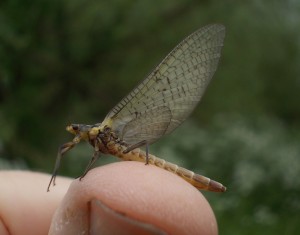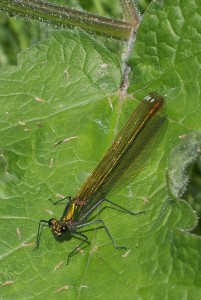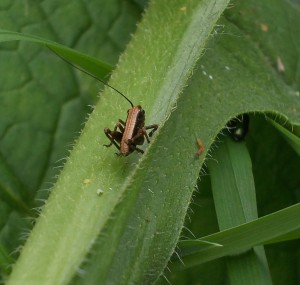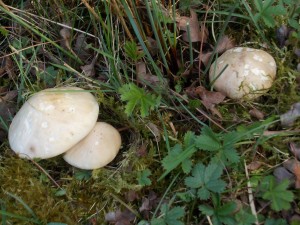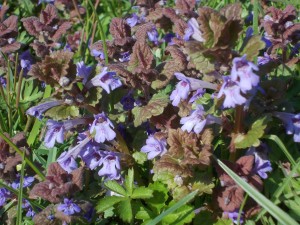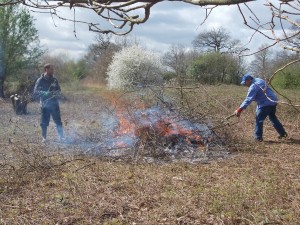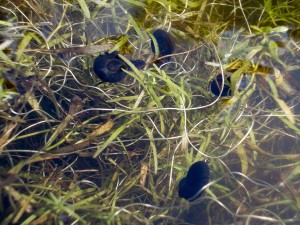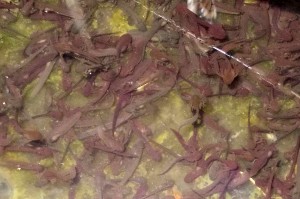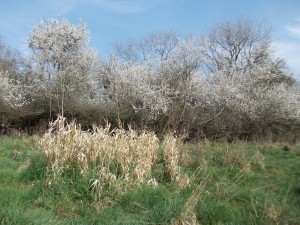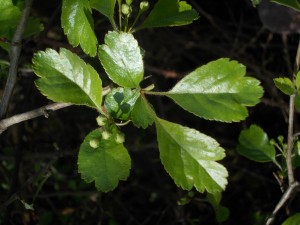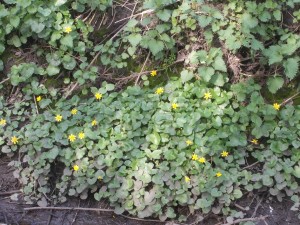Today I noted down in my nature diary “Sedge – Cetti’s – Blackcap – Chiffchaff – Whitethroat.” I didn’t see any of them: but I’m sure all of them were there, because I heard them unambiguously.
If you think that would be a nice thing to do, but utterly impossible for you, being a city-dweller with cloth ears, let me reassure you: it’s really not difficult. Have you ever been in a noisy party where someone suddenly said your name? You picked out the sound right away, and looked straight at where it came from, didn’t you. In other words, your hearing, and the auditory processing part of your brain, is perfectly adapted to picking out sound signatures from a jumble of other stuff – engineers call it noise, and who are we to disagree – without even thinking about it. It’s a wonderful ability, and it has obvious survival value.
So, to warblers. A lot of small, inconspicuous LBBs (yeah, little brown birds) that mainly lurk about deep inside bushes: but with one sharply distinguishing feature – you guessed it, their song. Each species takes good care to avoid hybridising with other species, probably producing uselessly infertile offspring, by announcing its identity to all and sundry. Males tell other males to push off; and they tell females where they are, what species they are, and (so I’m told) how wonderfully fit they are, just by singing in what the females judge is the right way.
So what is the right way? How, in other words, do these warblers sound? Ok, I lied about the audio, there’s no tape or what have you here. But, in simple words, here’s how to tell them apart.
Let’s start with the easiest one. The Chiffchaff just says his name, over and over and over again. Chiff-chaff-chiff-chaff-chiff-chaff… It’s a fairly high, lisping sort of song on, yes, exactly two notes. If you’re a registered European you may prefer to call it Zilp-zalp-zilp-zalp-zilp-zalp…. — it’s the same thing. The call is pretty loud and clear; if you know the Great Tit’s insistent Teacher-Teacher-Teacher call from park or garden, well, it’s not as harsh as that. The Chiffchaff can be heard almost anywhere there are a good number of trees and bushes; there are plenty in parks and by the river.
The warbler that looks almost exactly like the Chiffchaff is the Willow Warbler. It doesn’t frequent willows. It seems to be getting scarcer, and it likes more secluded bushy areas than the Chiffchaff. The song is a unique series of descending phrases, lisping from high to low like a pianist carefully practising his scales every morning: swieeuo(high)-swieeuo-swieeuo-swieeuo-swieeuo-swieeuo(low). It never varies.
The Blackcap is one of the commonest of our warblers. It sings from any reasonably thick patch of bushes: you need a pretty large garden to get Blackcaps, but they’re in every park and reserve. It’s a bit tricky to describe the Blackcap’s song, because he always improvises, like a jazz musician doing a gig. However, he is a bit of an opera meister, a tenor constantly worrying about his voice. So he goes like this: Ahem. La, la. Do re mi fa. Ahem. Hrrm. La la la. Ah, let me see. Yes. Aaaaaa–La Dolce Vita — Voce di Tenore – si – Aaaaaa! In short, the Blackcap starts rather hesitantly, stumbles a bit, warms up, sings a few fine fluty notes — and stops abruptly. Another way of putting it is the traditional “Blackcap’s brief”, but he’s not always quite that short.
The singer you might confuse with the Blackcap is the Garden Warbler. He’s distinctly less common, and requires more green space, but you have a good chance of hearing him in May. The Garden Warbler’s song is immediately recognisable as rather good. Even if you don’t bother with classical music much, you can at once hear that this is someone with a well-trained voice, perfectly modulated, even, rich, rapid, full of notes, expressive. I don’t want to spoil this by saying that the voice doesn’t do terribly much, but it’s true: the Garden Warbler’s song is always somewhat of a piece. It can go on for quite a while, sometimes tens of seconds without a break (excellent breath control), but there are no sudden leaps, no sharp highs or lows, no discordant notes. It’s Radio 3 not trying too hard in between major concerts.
Quite the opposite is the Sedge Warbler. I can give you a pretty sharp clue as to where you’ll find him singing: in a patch of reeds, certainly near water. He doesn’t need much room: at the Wetland Centre, one sings from a tiny reedbed right in front of a hide, and it’s amusing to watch people trying to locate him even as he sings his heart out. The Sedge Warbler’s song is REALLY discordant. Think modern classical and then some. Schoenberg and Cage rolled into one. Charr-charr-charr (so far so good) SQUEAK Chirp Weeaaiourgh – SQUEAK SQUEAK SQUEAK chirp chirp charr-charr-charr- getting used to this – charr-charr-charr SQUEAK hic! SQUAWK SQUNK got you there charr-charr-charr… and so on for ages. I promise you’ll recognise him straight away.
If we’re into scratchy, the Whitethroat is the start. He’s a beautiful bird and if you’re quiet and come out early before the hordes you’re quite likely to see him atop a tall thorn bush, singing at the top of his voice. He prefers rather isolated bushes in patches of scruffy scrubland. He is reddish brown with a conspicuous fluffy white throat, like an elegant eighteenth-century Mr Darcy with a tailcoat and a white silk neckerchief. Unfortunately for the romantic appearance, Mr D really can’t sing too well, nor for very long. Squeaky-squawky-scritch-scratch. Scrape. Scritchy-scratchy. Honestly, that’s about it. Occasionally if you’re very lucky you get a little bit of tune, but mostly there aren’t many musical notes in it at all.
OK, the Cetti’s. He isn’t nearly as Italian as his name; in fact, you can find him in reedbeds and beside lakes pretty much all year. He is a real skulker, so I hardly need to describe him, other than to say he sings from quite low down in thick waterside bushes. If you see him at all, it will be a quick glimpse of a medium-dark brown bird with a rounded tail, vanishing into a bush. To compensate, he has a REALLY LOUD song with the pattern Witchipitipit, Witchipitipit. Well, that’s the polite phonetic version. If I remember rightly, it was Simon Barnes in his magnificently naughty How to be a bad birdwatcher (Short Books, 2004; Amazon.com Amazon.co.uk) who voiced the Cetti’s as Me! Cetti’s! If you don’t like it, you can Fuck Off! You’ll definitely recognise him when you hear him, or he’ll nut you one. And once you know his song, you’ll be surprised how widespread he is.
I could do the Lesser Whitethroat for you too, and the Reed Warbler, but I expect you’ve had quite enough for one go. But feel free to ask me if you’re curious.
